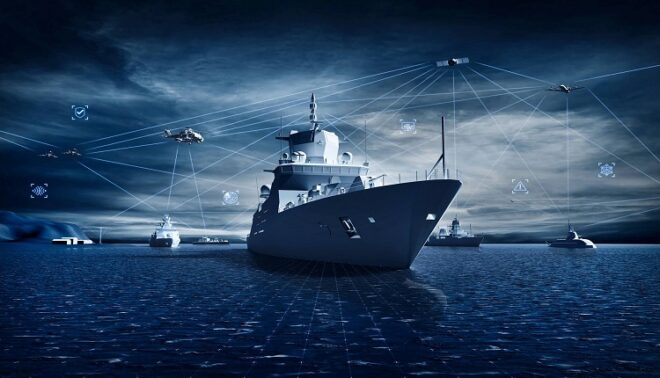
Naval Communication Market – Technological advancements, increasing maritime security threats, and growing emphasis on interoperability are the factors driving the market in the forecast period 2025-2029.
According to TechSci Research report, “Naval Communication Market – Global Industry Size, Share, Trends, Competition Forecast & Opportunities, 2029F”, the Global Naval Communication Market stood at USD 5.01 billion in 2023 and is anticipated to grow with a CAGR of 6.46%in the forecast period, 2025-2029.
The global naval communication market is influenced by several factors shaping its growth, alongside challenges and promising trends. Technological advancements play a crucial role as they continuously innovate satellite communication, secure data networks, and advanced encryption protocols. These developments enhance naval systems’ efficiency, reliability, and security, enabling seamless command, intelligence gathering, and communication in remote and hostile maritime environments.
Yet, the market confronts challenges, particularly cybersecurity threats. Protecting communication channels from breaches is critical as digital reliance grows. Addressing this requires ongoing investments in cybersecurity measures, including advanced encryption and threat detection systems, alongside training naval personnel in cyber resilience.
Several notable trends define the future of naval communication. Integration of AI and machine learning enhances predictive analytics and decision-making, boosting operational efficiency and situational awareness. Network-centric warfare is another trend, facilitating real-time information sharing and collaborative decision-making among naval forces and allies.
Opportunities abound due to rising defense budgets, notably in Asia Pacific and the Middle East, where investments in naval modernization and advanced communication systems are increasing. The demand for unmanned naval platforms like autonomous ships and underwater drones also drives specialized communication solutions for remote operations.
In conclusion, while cybersecurity remains a challenge, the naval communication market thrives on technological innovation and emerging trends like AI integration and network-centric warfare. Opportunities in defense modernization and unmanned platforms highlight its growth potential. As global navies prioritize secure and efficient communication, the market is poised for expansion, driven by digital advancements and evolving maritime security needs.
Browse over XX market data Figures spread through XX Pages and an in-depth TOC on ” Global Naval Communication Market.”
https://www.techsciresearch.com/report/naval-communication-market/19244.html
The global naval communication market is diverse, serving the specific needs of naval forces worldwide through various technologies and strategic focuses. It spans different platforms like ships, submarines, and unmanned systems, each requiring specialized capabilities. Ships rely on robust networks for command, coordination, and real-time data exchange. Advanced satellite and secure data links are crucial for enhancing situational awareness and mission effectiveness across naval fleets.
Submarines, operating underwater, need specialized communication systems like VLF and UHF technologies for secure and stealthy data transmission to naval command centers. These systems support covert operations, strategic deterrence, and underwater surveillance, crucial in modern naval strategies.
Unmanned systems such as ASVs and underwater drones are a growing segment, relying on advanced communication for remote control, data transmission, and real-time surveillance. Emphasizing autonomy, reliability, and secure data exchange, these systems extend operational reach without risking personnel.
Regionally, North America leads in naval communication with sophisticated networks and command systems, enhancing operational efficiency and maritime superiority. South America focuses on coastal surveillance and disaster response, using communication technologies for regional stability. Europe emphasizes collaborative defense with NATO, investing in secure networks and joint capabilities for maritime awareness.
In the Middle East & Africa, naval communication secures maritime chokepoints and supports multinational operations against regional challenges. Asia-Pacific nations prioritize naval modernization with satellite networks, AI analytics, and network-centric warfare, enhancing regional stability and defense partnerships.
Overall, the global naval communication market evolves with technology, regional security dynamics, and unmanned systems’ growing role, shaping future naval operations worldwide.
Major companies operating in Global Naval Communication Market are:
- Danelec Marine A/S
- Furuno Electric Co., Ltd
- General Dynamics Corporation
- Northrop Grumman Corporation
- Wärtsilä Corporation
- RTX Corporation
- Teledyne Technologies Incorporated
- Safran SA
- Honeywell International Incorporation
- Kongsberg Gruppen ASA
Download Free Sample Report:
https://www.techsciresearch.com/sample-report.aspx?cid=19244
Customers can also request for 10% free customization on this report.
“In the evolving landscape of naval communication, a continued emphasis on technological advancements that enhance interoperability, security, and situational awareness. Cybersecurity will remain a paramount concern, driving the development of robust defense mechanisms to protect communication networks from increasingly sophisticated threats. Additionally, the integration of artificial intelligence (AI) and machine learning will play a pivotal role in data analytics, aiding decision-making processes for naval commanders.
As navies worldwide modernize their fleets and seek to expand their maritime reach, collaborative efforts and global partnerships will be instrumental in shaping the future of naval communication, ensuring maritime security, and responding effectively to emerging challenges,” said Mr. Karan Chechi, Research Director of TechSci Research, a research-based management consulting firm.
“Global Naval Communication Market – Global Industry Size, Share, Trends, Opportunity, and Forecast, 2019-2029, Segmented By Application (Command and Control, Intelligence Surveillance and Reconnaissance (ISR), Routine Operations and Others), By Platform (Ships, Submarines and Unmanned System), By System Technology (Naval Satcom System, Naval Radio Systems, Naval Security Systems and Communication Management Systems), By Region and By Competition Forecast & Opportunities, 2019-2029F”, has evaluated the future growth potential of Global Naval Communication Market and provides statistics & information on market size, structure, and future market growth. The report intends to provide cutting-edge market intelligence and help decision makers take sound investment decisions. Besides, the report also identifies and analyzes the emerging trends along with essential drivers, challenges, and opportunities in Global Naval Communication Market.
Contact
Mr. Ken Mathews
Techsci Research LLC
420 Lexington Avenue, Suite 300,
New York, United States- 10170
Tel: +1-332-258-6602
Email: [email protected]
Website: www.techsciresearch.com
